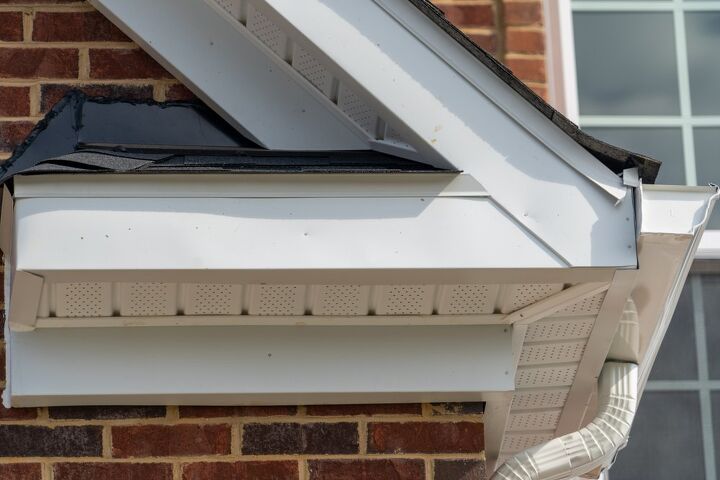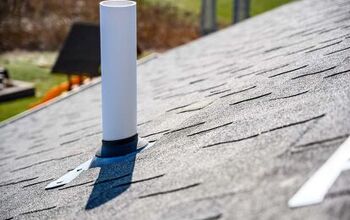Is Drip Edge Required By Code?

There is a never-ending list of codes that your home must be compliant with in order to pass inspection. Roofs are among the most susceptible to inspection issues and can be the reason why your house doesn’t pass. So, is drip edge required by code?
A drip edge on your roof is now required according to the International Residential Code if you have asphalt shingles. Otherwise, you risk water dripping behind the shingles and ruining your home’s exterior and interior with mildew or mold. If you hope to sell your house, ensure your roof meets all of the requirements laid out by the IRC.
This article will detail what drip edge is and if it’s required by code. Additionally, we’ll talk about what to do if your home doesn’t have drip edge installed and the benefits of this project!
Let’s talk about it.
Do You Need Roofing, Siding, or Gutter Installers?
Get free, zero-commitment quotes from pro contractors near you.

What Does “Required by Code” Mean?
If you’re not familiar with the phrase, we’ll explain what it implies.
When something is “required by code,” it usually means that the International Residential Code (IRC) indicates that it’s necessary in order to maintain the safety of your home or rental property.
In some cases, a state or city may have its own code that includes a similar mandate.
However, there are often arguments over what is truly required by code. The IRC guides the design and construction of new homes across America, but not all homeowners or builders follow it to the letter.
Typically, to pass inspection, your home must be up to code, so we don’t recommend ignoring their guidelines.
Drip Edge: What You Need to Know?
What exactly is drip edge?
Drip edge is a term used to describe the water-resistant barrier or metal flashing that is installed at the edge of a roof, with an overhang from the roofline. It protects the fascia board against water dripping down, under shingles, and into your home.
It also inhibits ice dams on roofs in cold climates by shedding any rainfall before it’s able to freeze.
Drip edge is a feature that’s usually installed by roofers because of its specialized function.
Is Drip Edge Required by Code?
As a homeowner, you might be asking yourself if drip edge is required by code.
All asphalt roof installations must now have a drip edge, as stipulated by the International Residential Code. This code document also gives instructions for properly installing it.
It says that underlayment must lap over the drip edge at the eaves. At the rake edges, the drip edge must be installed over the underlayment.
If the installation is done incorrectly, it will be obvious once the house is inspected. Additionally, you may start to see mold forming around the perimeter of your roof (if you’re able to see that far away or frequent a rooftop deck area).
What If Your Home Doesn’t Have Drip Edge?
If your home doesn’t have a drip edge, it’s recommended to put one in immediately.
Because it can be a complex installation for newbies, you should call in an experienced roofer if you’re not familiar with the process. It’s better that you have the job done correctly the first time rather than pay for the damage and consequences later.
If you’re in doubt about whether you need to install a drip edge, call your local code enforcement office. Remember that for an asphalt roof installation, it’s their requirement that your roof must have one.
When you’re getting ready to sell your house or have it inspected, it’s pivotal that you get this handled immediately.
After installing this type of protective barrier, you’ll never have to worry about those pesky leaks again!
Benefits of Drip Edge for Your Roof
There are many arguments for why it’s important to get a drip edge on your roof.
Here are just a few of the benefits that you’ll receive:
- It stops leaks and other problems before they start.
- Less chance of mold and rot, reducing your repairs and costs.
- It adds durability to the roof system.
- If you have a drip edge on your home, it may pass inspection more easily.
If you live in an area where rain is frequent and heavy, a drip edge is a must-have.
Related Questions
Is drip edge the same as rake edge?
No, although the two types of edge protection systems have many similarities.A drip edge goes along the bottom of your roof, while a rake edge is on the outside edges of your roof (or the gable ends). Both are important components of your roofing system that help to prevent long-term damage.
Does the drip edge go behind the gutter?
Gutters should be located beneath or behind the drip edge of your roof to prevent water damage.Gutters that are installed below the drip edge can cause water to permeate and result in harm to the wood supporting the gutter system.
How long is a piece of drip edge?
This varies based on the size of your roof, but a single sheet is around 10 feet.If you have a massive roof, the roofer will need to use several pieces of drip edge to fully protect your fascia boards.A typical gabled home needs about 3 pieces or 30 feet of drip edge.
Do You Need Roofing, Siding, or Gutter Installers?
Get free, zero-commitment quotes from pro contractors near you.

To Sum Things Up
If you’re wondering if drip edge is required by code, the answer is yes.
The International Residential Code (IRC) states that all asphalt roof installations must now have a drip edge included, and this means more than just adhering it to your house.
Underlayment must lap over the drip edge at the eaves. At the rake edges, the drip edge must be installed over the underlayment. If done incorrectly, it will be obvious once inspected or seen from an elevated vantage point such as on rooftops or decks.
You may also see mold forming around the perimeter of your roof, which can cause long-term damage.
For any homeowner who isn’t sure whether they need a drip edge, contact your local building inspection office for guidance.

Emily is a copywriter with over five years of experience in crafting content for the home renovation and remodeling industry. She loves house projects, whether it be painting a room or tweaking small design elements to transform a space. Her favorite aesthetic is french modern because of its clean lines and airy feeling! When not writing, Emily loves to travel and check out architectural details all over the world.
More by Emily Carr



























